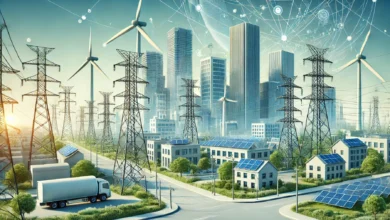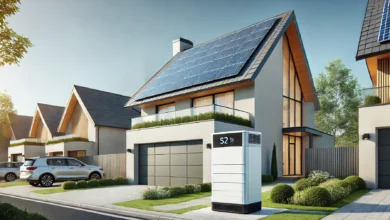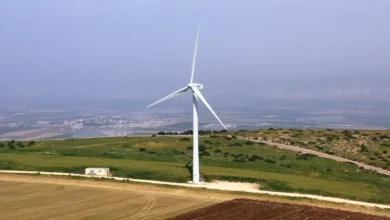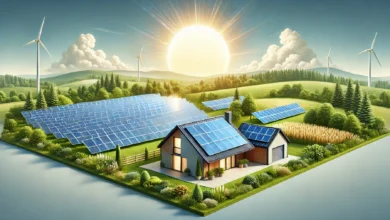Sustainable Energy: Renewable Resources and Applications
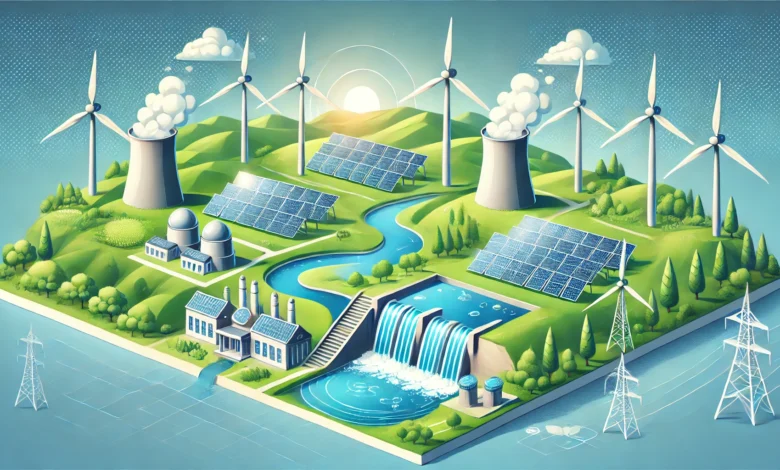
The development of sustainable energy is an important response to climate change, energy security, and long-term growth. Societies are struggling to find ways to reduce carbon emissions and move away from fossil fuels development of renewable resources and development of renewable energy in environmental, economic and social ways is transforming how the world is powered.
Contents
What is Sustainable Energy?
Sustainable energy is energy that meets current needs without compromising the ability of future generations to meet theirs. It considers environmentally sustainable, economically feasible, and socially responsible ways of producing energy.
Sustainable energy utilizes energy sources that will never run out or do not deplete finite resources like fossil fuels, which pollute the environment by emitting harmful greenhouse gases. These energy resources are continually replenished by environmental sources (e.g. Glen, 2009; Kleiman, 2007) such as sunlight, wind, and water. Sustainable energy will continue to be available to meet our energy needs with no catastrophic consequence to the environment.
Key Renewable Energy Resources
- Solar Energy: Solar energy is the energy of sunlight that is converted into electricity either through photovoltaic (PV) panels or through concentrated solar power. Solar energy is a clean energy resource that can be used at many scales from an individual residential rooftop to a utility-scale solar farm.
Are you interested in how solar energy systems work? Visit our article: How Do Solar Panels Work?
Application:
- Residential rooftop solar energy systems
- Utility-scale solar energy systems
- Solar thermal water heating systems
- Wind Energy: Wind energy is the energy produced from the conversion of wind’s kinetic energy into mechanical power by wind turbines. Wind energy is continually expanding as technological developments, such as offshore floating wind farms result in one of the fastest growing renewable energy sources.
If you want to know more about wind and how wind can help in climate change solutions, you might want to have a look at: The Role of Wind Energy in Climate Change Mitigation
Applications:
- Onshore and offshore wind farms
- Small wind turbines for personal use in homes and farms
- Hybrid renewable systems (solar + wind)
- Hydropower: Hydropower utilizes the energy of flowing water (rivers, streams, and ocean waves) to create electricity. It is the world’s oldest renewable energy source.
Find out more about benefits and drawbacks here: Hydropower Pros and Cons
Applications:
- Dams and reservoirs
- Run-of-river systems
- Pumped storage hydropower systems
- Biomass Energy: Biomass energy derives from, or originates from, organic (biological) materials like wood, agricultural residues (grains), or even algae! Biomass can be an efficient, versatile, and sustainable energy source but we must also make sustainable decisions to reduce emissions and limit deforestation.
Want to learn more? Have a look: What is Biomass Energy?
Applications:
- Biomass power plants
- Biofuels for the transportation sector
- Combined heat and power (CHP) systems
- Geothermal Energy: Geothermal energy utilizes the earth’s heat (inner Earth) to create electricity and heating/cooling.
Applications:
- Geothermal power plants
- Ground-source heat pumps
- District heating systems
Applications of Sustainable Energy
Household Applications
Homeowners are utilizing solar panels, small wind turbines, and geothermal to not only lower costs in their bills but also to lessen their impact on the environment. In many states, net metering policies allow homeowners to sell that excess electricity back to the grid.
Interested in learning more about using solar in your home? Read: Ways to Power Your Home Using Renewable Energy
Commercial Applications
Businesses are building solar arrays, using biomass boilers, and investing in energy efficiency upgrades and certifications (with rebates and other incentives).
Industrial Applications
Industrious businesses are integrating renewable energy into their manufacturing processes, including large solar and wind farms, which power directly into energy-intensive operations, such as data centres and factories.
Grid-Scale Energy Storage
Renewable energy sources, such as solar and wind, are intermittent in nature. Energy storage solutions, such as battery farms and pumped hydro storage, are essential to stabilize the grid and ensure continuous energy supply.
Benefits of Sustainable Energy
- Environmental: Reduced greenhouse gas emissions, reduced air and water pollution, and increased ecosystem protection.
- Economic: Job creation, reduced energy costs over time, improved energy independence.
- Energy Security: Energy supply diversification can limit dependence on imported fuels.
Challenges to Sustainable Energy Transition
- Infrastructure Upgrades: Transitioning to renewable energy may involve upgrading and modernizing the nation’s electrical grid, storage facilities, and developing smart grid technology.
- Storage Constraints: Commercially viable energy storage has yet to be developed to a level of effectiveness and affordability.
- Policy and Finance Factors: Regulatory inconsistency, subsidies for fossil fuels, and high capital costs can inhibit adoption.
Future Trends in Sustainable Energy
- Microgrids: Localized energy grids that can operate independently from the traditional grid.
- Green Hydrogen: Hydrogen produced using renewable energy sources offers a clean fuel alternative to fossil fuels.
- Smart Grids: Digital technology is used to manage electricity demand.
- Energy Positive Buildings: Buildings that create more energy than they consume.
Frequently Asked Questions (FAQ)
What are examples of sustainable energy sources?
Sustainable energy sources include solar, wind, hydropower, biomass, and geothermal energy.
Is sustainable energy cheaper than fossil fuels?
In most regions, renewable energy is already less expensive than fossil fuels (as technologies are improved and economies of scale are realized).
Can an entire country use renewable energy?
Absolutely. Countries, like Iceland and Costa Rica, produce almost 100% of electricity from renewable sources.
What is the biggest obstacle to using sustainable energy?
The biggest hurdles to using sustainable energy are infrastructure costs, storage technology constraints, and political and financial barriers.
What can individuals do to promote sustainable energy?
Individuals can install solar panels, provide voice to clean energy policies, select green energy options from utilities, and develop energy-saving habits at home.
